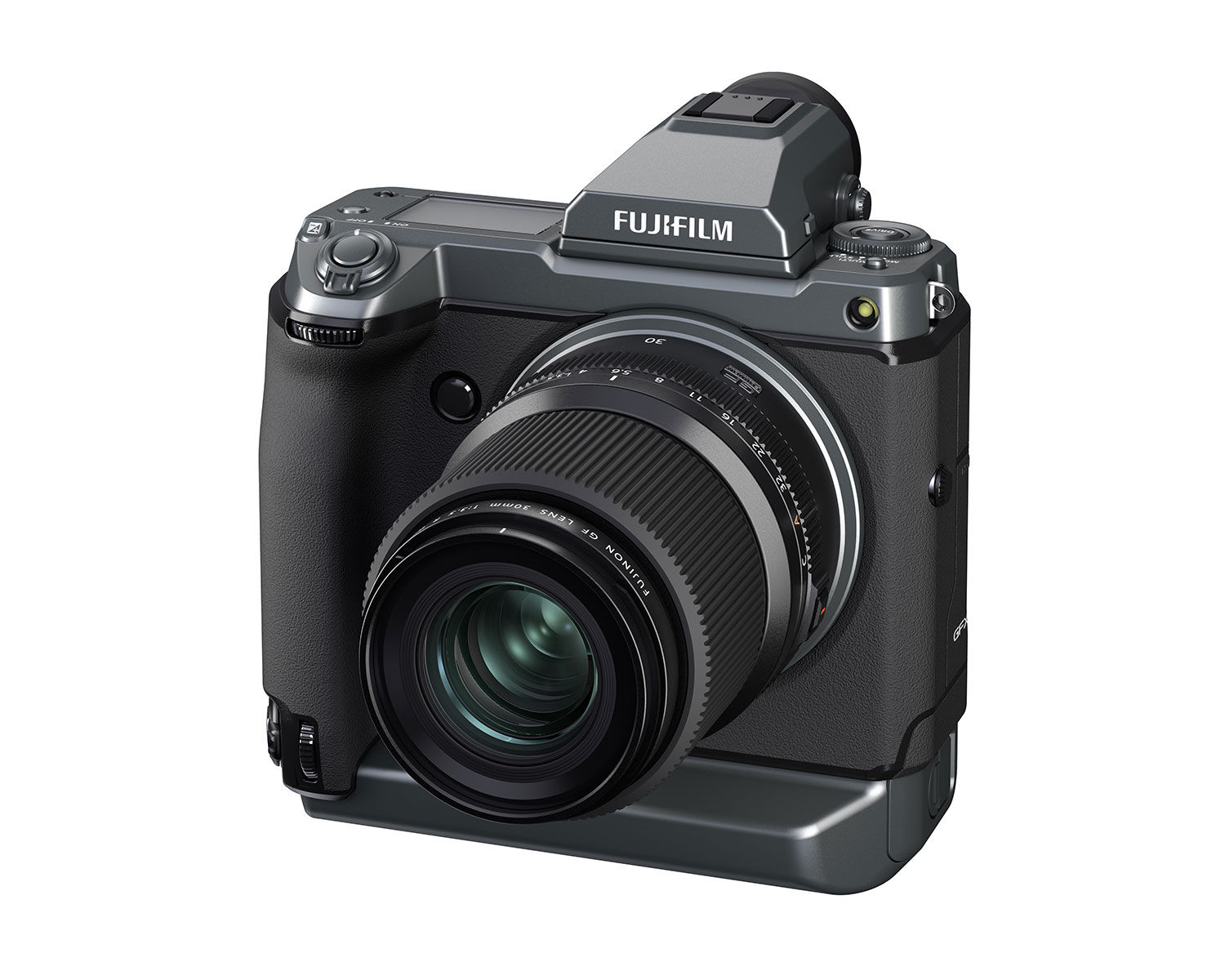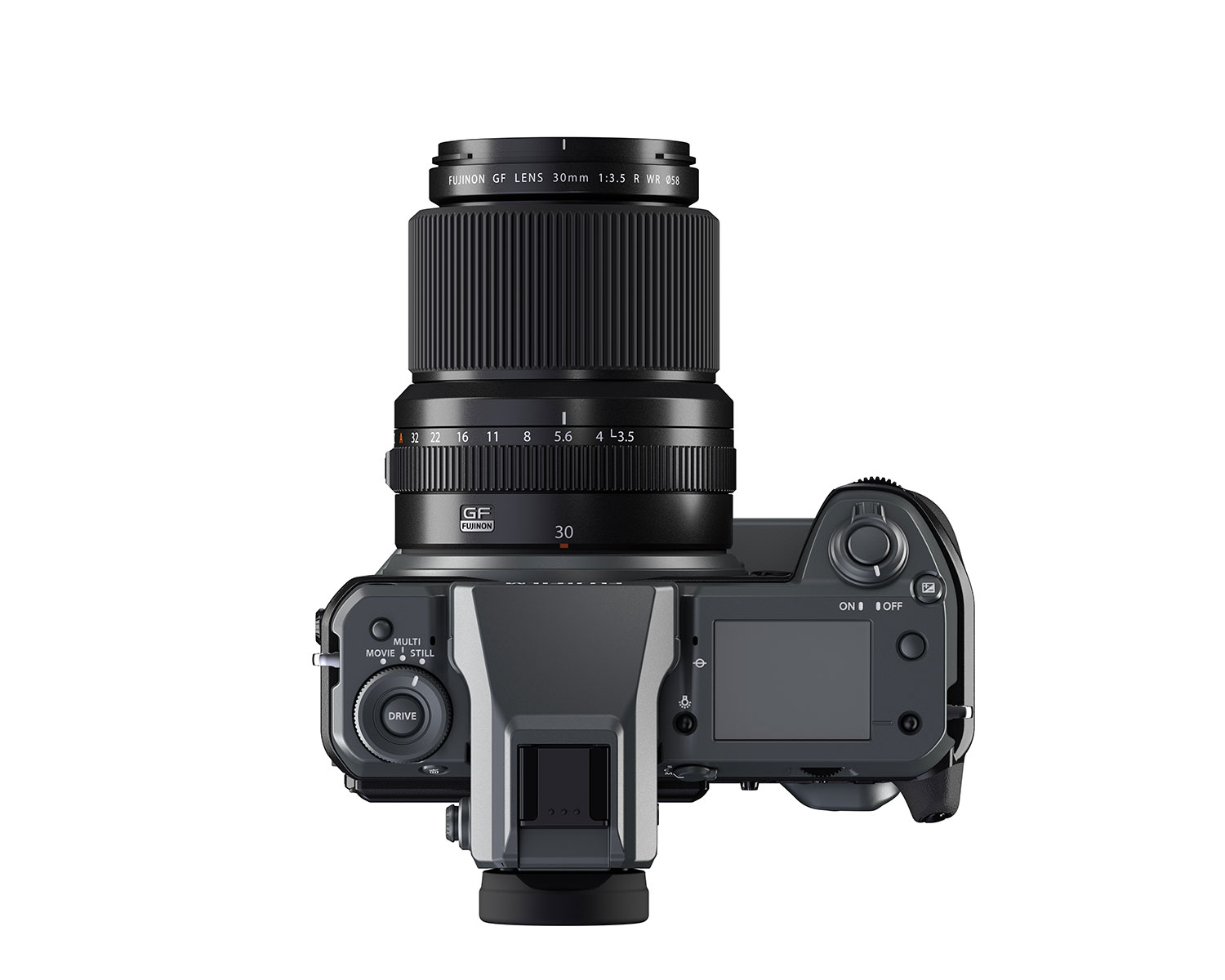Fujifilm rolled out a new 30mm F3.5 R WR lens Wednesday for its medium-format GFX system that promises high-resolution performance in a relatively compact size. But that might not be the biggest news out of Fujifilm today. It also announced major firmware updates for all three GFX camera bodies, including the addition of RAW video output to the $10,000 GFX 100.
The new prime lens, which has a full-frame equivalent focal length of 24mm, weighs just over 1 pound and features 13 elements in 10 groups. Nine rounded aperture blades should help ensure circular bokeh, while weather-sealing at nine points will keep the lens safe when out shooting in the elements. It also offers minimal focus breathing of 0.05%, meaning the lens won’t “zoom” while changing focus, which can be distracting in video.
Video was a big part of today’s announcements. The GFX 100 was already in a unique position as a medium-format still camera that could shoot 4K video. Now with the option for RAW output over HDMI, it could become a serious tool for professional filmmakers and other high-end videographers. As with a RAW still photo, RAW video is much more flexible when it comes to color grading.
There are some limitations, however. RAW video is saved in the 12-bit Apple ProRes RAW format and requires an Atomos Ninja V recorder — it can’t be recorded internally. RAW output is also limited to Ultra HD resolution (3,840 x 2,160), whereas internal recording offers both UHD and the wider DCI 4K (4,096 x 2,160). Still, this is a huge feature for a medium-format camera, as the class has typically not had video modes at all.
And the updates didn’t stop there. The GFX 100, the sole camera in the lineup with fast phase-detection autofocus, can also now focus in darker settings, down to -5EV. Slow low light autofocus was one of the few cons we listed in our review of the camera, so this is a welcome upgrade — at least if the on-paper specification translates to real-world performance.
The older GFX 50S and 50R cameras also gain a new low-light autofocus mode as part of their firmware updates, but Fujifilm’s vague description of “improved AF accuracy” doesn’t give us much of a hint as to the level of improvement. The 50S and 50R both use slower contrast-detection autofocus.
A number of smaller features are also bundled with the new firmware, including additional film simulations, in-camera skin smoothing, and remote exposure control when shooting tethered to a computer. The firmware updates can be downloaded for free from Fujifilm’s support site.






